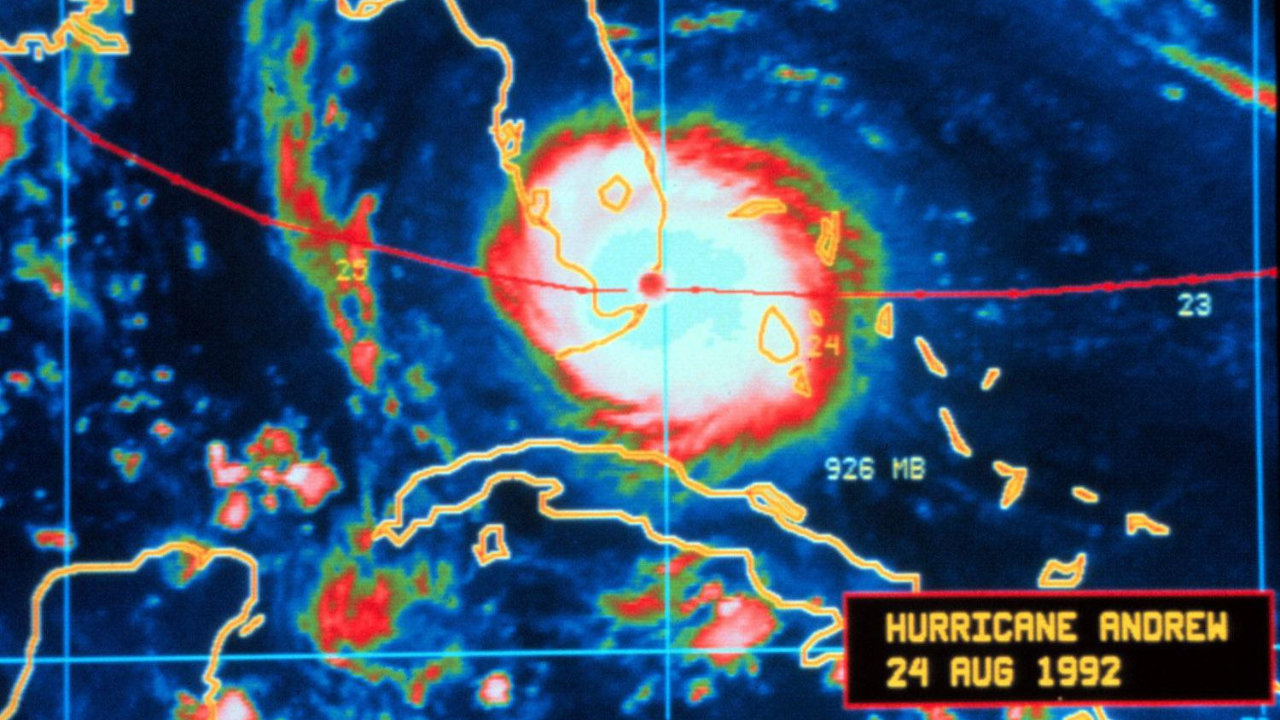TAMPA, Fla. — Wednesday marks 30 years since Hurricane Andrew made landfall in South Florida as the worst storm to hit in the state’s history, but experts say with the rapid population growth, a current-day storm the magnitude of Andrew would cost about four times as much in damages.
Hurricane Andrew touched down in Dade County, Florida, on August 24, 1992, with maximum winds of 165 miles per hour and a storm surge 17 feet above sea level. It obliterated neighborhoods, destroyed 50,000 homes, and damaged more than 100,000 others. It took 43 lives and left 250,000 people homeless, according to National Weather Service.
“After Hurricane Andrew, we saw so many neighborhoods with legitimate structural damage to homes,” explained Ian Giammanco, Senior Director for Standards & Analytics at the Insurance Institute for Business & Home Safety.

It was primarily a wind event, and its price tag then was about $26 billion in damages and $15 billion in insurance costs.
With just the cost of inflation today, Andrew’s damages would be double what they were in 1992 at about $50 billion.
The good news is that Florida’s since created some of the strictest building codes in the country.
“The three top things that came about in the building code arena after Hurricane Andrew. One was the presence or implementation of impact resistant glass and requirement of shutter systems to be able to protect window,” Giammanco explained.
“Two, the state of centralized how they inspect and enforce building codes,” he added. “And then number three is really taking, upping the design standards for buildings, and that changes really the level of wind a building can withstand.
While buildings are a lot stronger, there’s no question there are a lot more of them since 1992, with the state’s population going from 13.5 million then to about 22 million now, according to Census data.
The record population growth in recent years is only piling up the possible damages from another storm like Andrew.
“When you compile all that growth, with the fact that we still haven't solved the building component elements of damages like siding and shingles and those kinds of things, the dollars really do just start adding up,” Giammanco said.

So what would a storm of Andrew’s magnitude really cost today?
Swiss Re, a global reinsurer for several insurance companies in Florida, said that their models predict a current day Hurricane Andrew would cost the state more than four times what it did in 1992 at $120 billion, at least half of that is insurance costs.
“Obviously, there is inflation, there is a replacement cost increase over time since 1992, but the majority of that increase in the headline numbers that you will see would come from growing population exposures in the region,” exclaimed Erdem Karaca, Head Cat Perils Americas for Swiss Re.
In addition, Swiss Re models show that climate change and sea level rise also worsen the threat of flooding to coastal regions such as Tampa Bay; calculating that an average of six inches in sea level rise could increase storm damage costs by 15-20%.
“Gradually, the sea level is increasing, but that six-inch increase, let's say on average, it's not going to happen next year, or in five years, it will come in 30 years or so,” Karaca clarified.
Giammanco is concerned that more and more people are moving to the coastlines of Florida, such as Pinellas County, which are severe flood zones.
“When we look at building codes, moving away from flood-prone areas, those things, the question is which one's going faster is our ability to mitigate this catching up with our growth rate? Are we just growing so fast as communities that it's hard to keep up because we're simply just putting a lot of things right in harm's way?” he asked.
Unfortunately, this hurricane season was difficult for many property insurance companies to get reinsurance. More than 40 companies opted into the state’s new reinsurance fund created out of May’s special session.
So far this year, five property insurance companies have gone into receivership. It’s the most since Hurricane Andrew hit when seven companies did not have enough money to cover claims.
After Andrew, Florida also created the Florida Hurricane Catastrophe Fund (FHCF) during a special legislative session to reimbursements to insurers for a portion of their catastrophic hurricane losses.
According to the Office of Program Policy Analysis and Government Accountability, “As of December 31, 2021, the FHCF had an estimated fund balance of approximately $11.3 billion. The FHCF also had $3.5 billion in Series 2020A pre-event bond proceeds, providing additional liquidity for the 2021 season. Regardless of this fund balance, the FHCF would still need to rely on post-event bonding and emergency assessments to pay claims if a storm or storms of sufficient magnitude impacted Florida.”
While we’ve been in hurricane season for a few months now, historically, the tropics are more active in September and October.
A few things you should make sure you have in place today:
- Take pictures of your home and your possessions
- Have an emergency evacuation plan
- Update homeowners or renters insurance policies to cover the cost of inflation
- Get flood insurance - this is separate from your homeowner's policy
The Insurance Information Institute advises anyone who lives in Florida to have flood insurance and not to wait for a storm to be named.
“If you get a National Flood Insurance policy, it takes 30 days to become effective. So you need to plan ahead. You can't decide once you hear the forecast that storms coming to buy flood insurance; it’s too late. So that's why we say today is the day,” said Mark Friedlander, a spokesperson for Insurance Information Institute.
There are more than 40 private carriers that offer flood insurance in addition to FEMA’s National Flood Insurance Program.




